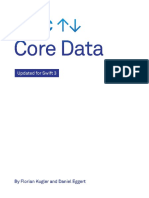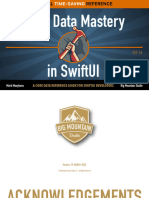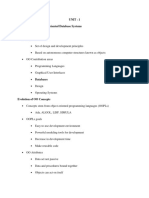0% found this document useful (0 votes)
23 views1 pageCore Data
Core Data is a mature object graph management and data persistence framework that offers advanced features and flexibility for complex applications. However, it has a steep learning curve, is less optimized for Swift, and presents concurrency challenges. While it integrates with SwiftUI, it does not provide the same level of ease as newer frameworks like SwiftData.
Uploaded by
Amazing DealsCopyright
© © All Rights Reserved
We take content rights seriously. If you suspect this is your content, claim it here.
Available Formats
Download as PDF, TXT or read online on Scribd
0% found this document useful (0 votes)
23 views1 pageCore Data
Core Data is a mature object graph management and data persistence framework that offers advanced features and flexibility for complex applications. However, it has a steep learning curve, is less optimized for Swift, and presents concurrency challenges. While it integrates with SwiftUI, it does not provide the same level of ease as newer frameworks like SwiftData.
Uploaded by
Amazing DealsCopyright
© © All Rights Reserved
We take content rights seriously. If you suspect this is your content, claim it here.
Available Formats
Download as PDF, TXT or read online on Scribd
/ 1






























































